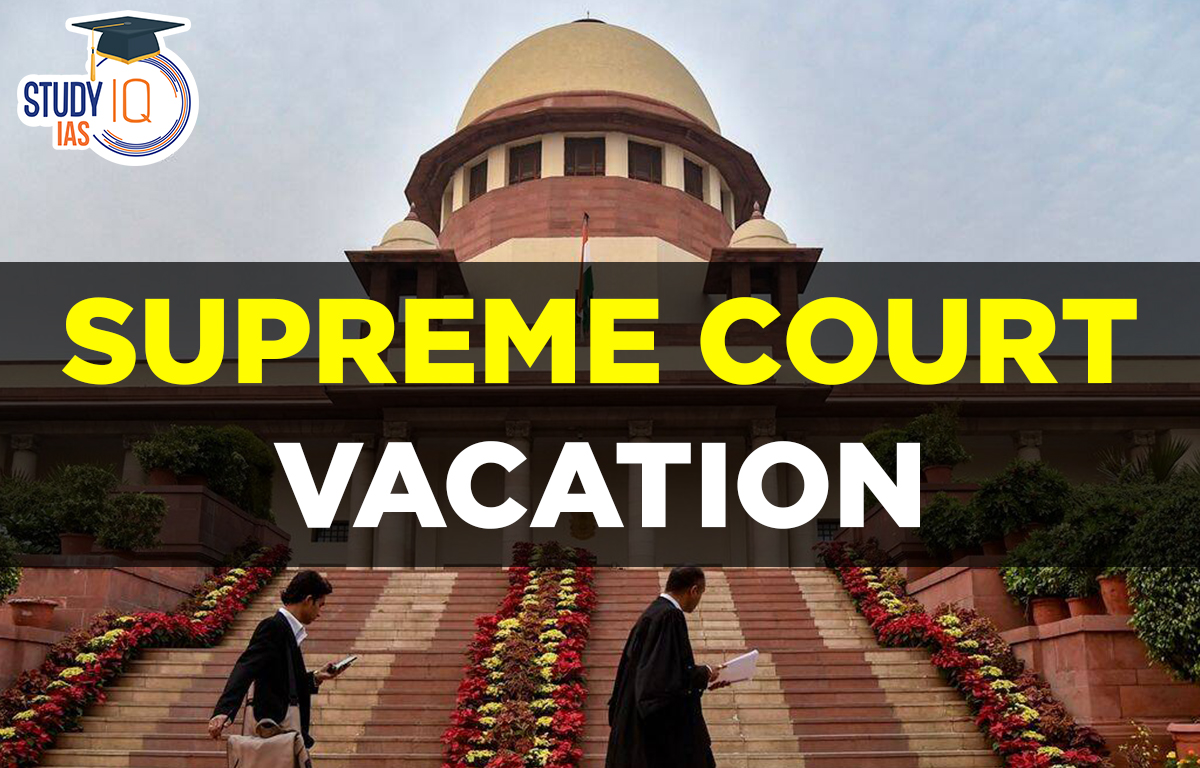Table of Contents
Supreme Court Vacation 2022 News
The Law Minister of India had criticised the judiciary for taking long vacations even as pending cases rise to record levels every year.
This issue can only be resolved if a “new system” on the appointment of judges is evolved.
The minister further added that there is a feeling among people of India that the long vacation of the courts is not very convenient for justice-seekers.
What are Supreme Court Vacations?
The Supreme Court functions for 193 working days a year, while the High Courts function for approximately 210 days, and trial courts for 245 days.
The Supreme Court breaks for summer vacations (seven weeks), Dussehra and Diwali (one week each), and two weeks winter vacation at the end of December.
This practice originated during colonial times and is still prevalent. It has also come under severe criticism from all quarters.
Supreme Court Vacation Winter Benches
Despite the vacations, a few judges of the court are available for hearing urgent cases. Combination of two or three of these judges is called “vacation benches”.
Vacation bench is constituted by CJI to hear important cases that cannot wait, such as bail, eviction, etc.
For getting a matter listed before a vacation bench, the counsel or party-in-person must file an affidavit of urgency that should include the nature of the matter, the reason for not filing it before the vacation, the latest date up to which the matter can be heard in view of the urgency, and the nature of interim order sought.
Supreme Court Vacation benches usually hear matters related to rent, land acquisition, compensation, academics, elections, and habeas corpus petitions. They can also hear important cases during the vacation breaks.
- Ex: In 2015, during the summer break, a five-judge Bench of the Supreme Court heard the challenge to the constitutional amendment setting up the National Judicial Appointments Commission (NJAC).
- In 2017, during summer break, a Constitution Bench held a six-day hearing in the case challenging the practice of triple talaq.
Support and Criticism of Supreme Court Vacation Period
| Support | Criticism |
| Supporters argue that vacations are a must for rejuvenation, in a profession that needs intellectual rigour. | Frequent vacations are not favoured, especially in the light of mounting pendency of cases and the snail’s pace of judicial proceedings. |
| Judges do not take leave of absence like other professions. They are only entitled for vacations. | The practice of summer vacation was developed for European judges, who were unable to function during hot summers. There is no need for such facility in the era of modern cooling systems. |
| Cancelling vacations will not have any impact on pendency. Majority of pending cases are legacy cases that need to be tackled systemically. | Individual judges can be given vacations instead of the whole institution. |
| Many judges utilise vacations for writing judgments for pending cases. | Curtailing vacations can reduce workloads on judges during working period. |
Reforms in Supreme Court Vacations
The Justice Malimath Committee of 2000 suggested that the period of vacation should be reduced by 21 days, keeping in mind the long pendency of cases.
- It suggested Supreme Court function for 206 days, and High Courts for 231 days every year.
The Law Commission of India headed by Justice A R Lakshmanan in 2009 suggested that vacations in the higher judiciary must be curtailed by at least 10 to 15 days.
In 2014, the then CJI R M Lodha had suggested keeping the Supreme Court, High Courts, and trial courts open round the year.
Former CJI T S Thakur also suggested holding court during vacations if parties and lawyers agreed to the proposals mutually.
Global Practice
United States: The US Supreme Court hears approximately 100-150 cases a year, and sits for oral arguments for five days a month.
United Kingdom: The High Courts and Courts of Appeals functions for 185-190 days in a year. The Supreme Court sits in four sessions throughout the year, spanning roughly 250 days.


 AI Maker Labs: A Promise to build AI in ...
AI Maker Labs: A Promise to build AI in ...
 Daily Quiz 15 April 2025
Daily Quiz 15 April 2025
 How RBI Responded To Global Trade War Ch...
How RBI Responded To Global Trade War Ch...





















